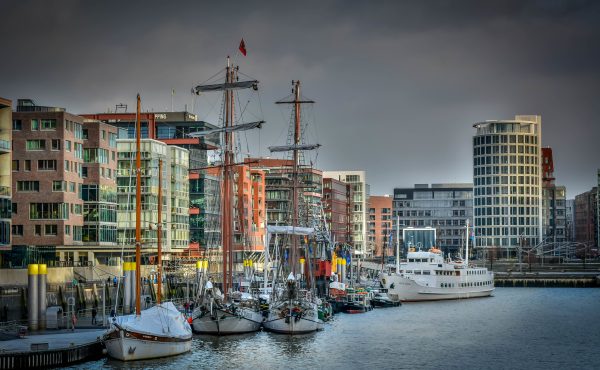Image: Christof Spieler, Trains, Buses, People: An Opinionated Atlas of U.S. Transit, Island Press.
The recent news from Vancouver is driving some to despair. A regional transit plan, agreed upon just last year, has been scuttled by TransLink’s Mayors’ Council. They have agreed to replace a planned surface LRT line in the outlying suburb of Surrey with a SkyTrain (heavy-rail line) extension, and cancel another LRT line in Surrey altogether.
Vancouver?! If those happy cooperative people of the Wet Coast can’t do it, is it even possible to do stable regional planning anymore? Was it ever?
I’m sorry to rain on the parade, but the reality is good regional planning is almost impossible, and it requires much more rigorous governance than we have—and frankly, much more honesty.
Planning regional transit in Canada and the United States has some particularly awful aspects to it. The high degree of automobilization of our urban development has left us with landscapes of sprawl, riddled with large pockets of exclusively residential suburbs. This leaves people having to travel significant distances for their daily needs, especially to get to their places of employment.
Such weak land-use planning is a feature of most metropolitan regions in Canada and the US, and it is hard to solve land-use problems with even the best of transit planning. In many areas, every trip seems to require a car: the short trip to the store, a visit to the doctor, a visit to a friend, the longer trip into the city centre.
One of the reasons travel seems to require a car is that the landscape was built around driving, to the exclusion of other forms of mobility. But the car is an inefficient and dangerous mode of transportation in an urban environment. It drags down a city’s economy.
Our regional landscapes are also racialized, divided by income inequality, and unevenly served in terms of transportation options. Mobility is a question of equity and social justice. No matter how rational or efficient our choices of transit corridors and stop locations are, ignoring the social differences in our city’s geographies will likely worsen inequality.
Partisan political divides map on to those landscape differences. The divides between urban, suburban and rural voters are well documented. The politicization of regional planning through weak governance models, particularly in places that lack independent transit agencies, multiplies the difficulties.
Regional cooperation can help, but those landscape and political differences don’t go away. Vancouver is a case in point. Surrey’s population is almost as large as the city of Vancouver’s, and right now it is throwing its weight around. This is easier to do on TransLink’s Mayors’ Council, where one can request that a vote be weighted by each municipality’s population.
Vancouver has 631,000 residents; Surrey has 518,000. Yet only one is a big city. Surrey’s land area is almost three times the size of Vancouver’s and thus the latter’s population density is 5493 persons per square kilometre, while Surrey’s is 1637 persons per square kilometre.
That big difference in density matters a great deal for transit planning. Despite its comparable population, Surrey doesn’t have sufficient density for heavy rail. Moreover, transit is a key pillar of Surrey’s Poverty Reduction Plan, and the cancelled LRT route would have run through many more low-income areas than the SkyTrain line, which is eating up the whole budget and then some. The cooperative governance structure of the Mayors’ Council balances some things better than others.
Another challenge with regional transit planning is that most of the time we’re dealing in megaprojects. These large-scale, multi-million- or multi-billion-dollar projects are the common answer to transportation problems at the regional scale. Their literal footprint is huge, particularly for rail projects. The more territory a project snakes through, the more complex it becomes: more topography, more residents, more spatial disruption, more environmental issues, etc.
Megaprojects and regional planning also encourage a specific kind of thinking: we can fix everything! We can make everything run smoothly! Surely with enough roads or rails or data or the right app, no one need ever sit in traffic again!
We all live in the constant wreckage of these projects and their politics. Projects run over time and over budget, and don’t deliver on their promises. Decision reversals are common.
Is there a way out? Well, no. Not entirely.
But we can make it better.
A recent book, Trains, Buses, People: An Opinionated Atlas of US Transit, offers some insight. The author, Christof Spieler, is an engineer, planner and academic, who also served on the Board of Directors of Houston’s transit agency for eight years. His book has a lot to teach us, and he and I also had a long chat about his book a few weeks ago.
Spieler looks at dozens of transit networks in great detail, in cities across the US. These cities have different histories, different topographies and different politics. His purpose is to see how we can work within such diverse contexts to understand how decisions get made about what gets built where. And, ideally, make better decisions.
He writes of how important it is “to have the right conversations about transit.” This means focusing on actual service delivery rather than obsessing about technology; it means considering existing and potential transit riders in all their diversity; it means situating transit in its larger pedestrian realm and making it all work. “Above all,” Spieler says, we need “to talk about getting transit in the right places.”
Spieler has some broad recommendations, but I want to emphasize they are derived extraordinarily small-scale, detailed study. As he says, when you are planning transit, where something goes – the bus stop, the subway station – really matters. You have to get right down to the user level to do it right. Part of all transit, at any scale, has to be planned at the scale of 500-1000 metres. Sometimes a difference of a 100 metres is the difference between attracting or actively deterring riders.
What this teaches us is that good regional transit planning must be rooted in strong local transit and strong pedestrian realms. Spieler points out that if someone needs a car for any one part of their day, they will use a car for their whole trip. If the local transit isn’t frequent, reliable and accessible, the regional will never be effective. The station has to be in the right place. Regional lines need to connect well with local routes.
That means local authority and control, too, because only local knowledge can answer the critical questions. Regional cooperation is good and we especially need to think about building a network with good connectivity. But regional cooperation has to be the product of a chorus of local voices, not governance from a bird’s-eye view.
One of the problems Spieler specifically identifies is that “we think at too large a scale.” A region is not a single place. It only looks that way on a map. As Spieler says, a regional map can set the view, and “long lines look impressive.” But as soon as you are looking at a regional map, you can literally no longer see the details of what will make transit successful.
Regions are constellations of places, and each of those places has to work well for the region as a whole to thrive. Most people within regions still live locally. Regional planning, because it necessarily employs regional maps, imagines people moving across the entire region, but that’s not the norm.
I sometimes wonder if this perspective isn’t exacerbated by the individuals who do this planning. Many planners, politicians and business people who get involved in regional planning live highly mobile lives. They regularly travel from city to city, country to country, and imagine this kind of mobility and economy is typical and efficient. It is neither.
If we plan transit for a region from the top down, it will not connect with people’s daily lives. If we rush those plans at the expense of local consultation, we will miss the detailed knowledge we need to get the locations of lines and stations right. If we think of regions as singular places, we will fail to understand the importance of nodes that make a network effective. If we don’t improve and diversify land use, we will continue to get poor returns for the billions we invest in transit infrastructure.
Urban regions in Canada and the United States are starting from a difficult position for developing regional transit. There is no skirting around the physical, social and political landscapes we have. The impulse is to squash these problems under the weight of the Big Perfect Regional Project. But regional planning and its megaprojects need strong local transit, walkable landscapes that support it, and local and transparent governance to succeed–not just more money and technology.





One comment
I listened to Mr. Spieler on the Overhead wire podcast and he was saying the same thing. Great post. This kind of information needs to be out there wider. I think people get it, but the tools that municipalities have aren’t the right kind. Yes money for regional planning comes mostly from federal and provincial governments, but if we are to as Mr. Spieler says, “think about it from the users level to get it right”, then the municipalities have to take on a larger role, and should bear greater responsibility if projects fail. Therefore, regional planning must involve both carrots and sticks to get accomplished correctly. We (the senior level of government) will put this piece of infrastructure in your (municipal) area, but here is what we need to make it a success. Eliminate parking minimums, prove that you can manage the curb, change zoning in areas around stations to increase mixed use, etc…